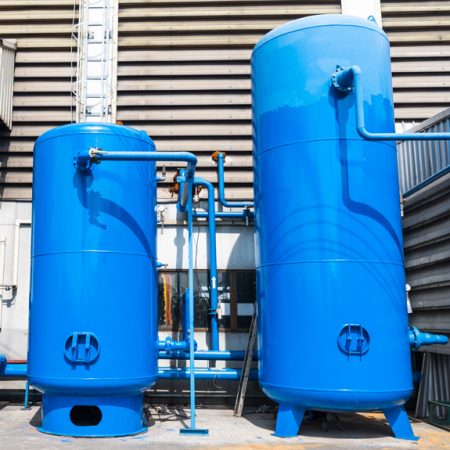Compressed air pressure vessels play a critical role in many industrial operations, providing a reliable source of compressed air for various applications. However, with great power comes great responsibility—ensuring the safety and reliability of these vessels is paramount. In South Australia, regulations mandate regular inspections and certifications to keep these vessels compliant and safe.
Why Inspections Are Essential?
Safety First
Compressed air pressure vessels operate under high pressure, which can pose serious safety risks if not properly maintained. Regular inspections help identify potential issues such as corrosion, leaks, or structural weaknesses that could lead to catastrophic failures. Ensuring the safety of your employees and facility is the primary reason for adhering to inspection protocols.
Legal Compliance
In South Australia, the Occupational Health and Safety Act and the Australian Standard AS 3788 govern the operation and maintenance of pressure equipment. Regular inspections and certifications are not just best practices—they’re legal requirements. Non-compliance can result in hefty fines, operational shutdowns, and increased liability risks.
Equipment Longevity
Regular inspections help extend the lifespan of your pressure vessels. Identifying and addressing minor issues before they escalate can save you from costly repairs or replacements down the line. A well-maintained vessel also operates more efficiently, contributing to overall energy savings for your operation.

What Does the Inspection Process Involve?
Visual Inspections
The first step in any inspection involves a thorough visual examination of the pressure vessel. Inspectors look for signs of wear, corrosion, leaks, and other physical defects. They also check the condition of the fittings, pressure relief valves, and pressure gauges.
Non-Destructive Testing (NDT)
Depending on the age and condition of the vessel, inspectors may employ non-destructive testing methods, such as ultrasonic testing or magnetic particle testing. These techniques allow for a detailed assessment of the vessel’s integrity without compromising its functionality.
Documentation Review
Inspections also include a review of all relevant documentation, such as previous inspection reports, maintenance records, and compliance certificates such as the Manufacturers Design Report & Design Registration. Ensuring that your records are up-to-date is essential for a smooth inspection process.
Certification
Upon successful completion of the inspection, your pressure vessel will receive a certification that confirms its compliance with applicable standards. This certification is essential for legal and operational purposes and should be displayed prominently at your facility.
Frequency of Inspections
In South Australia, the inspection & registration of a vessel varies depending on the type of vessel, its usage, and the volumetric capacity. Generally, pressure vessels should be inspected every 24 months, with it the pressure safety valve being recalibrated or replaced 4-5 years. However, certain high-use or older vessels may require more frequent assessments. It’s crucial to stay informed about your specific requirements to ensure compliance.

